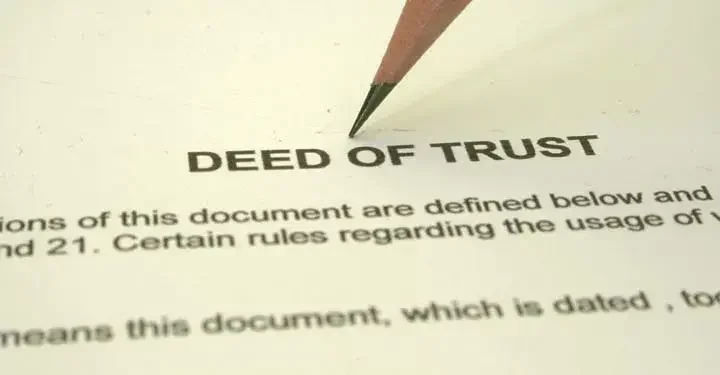A deed of trust is a legal document that essentially puts a piece of property up as collateral for a loan. Although sometimes used in place of a mortgage, a deed of trust functions differently and makes foreclosing on the property simple for the lender.

Understanding a deed of trust
A deed of trust is used with a loan when real property is used to secure the loan. The deed gives the lender the right to receive the proceeds of the sale of the property at auction if the loan is not paid. Unlike a warranty deed, which immediately transfers the owner's rights in the property to the buyer, a deed of trust is not intended to transfer title to a property unless the loan is unpaid.
A deed of trust has three parties:
- trustor: the property owner borrowing the money
- lender: the person or company making the loan, sometimes called the beneficiary
- trustee: the person or company (often an escrow company) who holds legal title to the real property under the deed and has the responsibility of selling the property at auction if the trustor doesn't make the required payments on the loan
Deed of trust vs. mortgage
A mortgage and a deed of trust are both used to secure a loan, which is a separate document. One difference between these two legal documents is that a deed of trust has three parties (trustor, lender, and trustee) while a mortgage has only two (lender and borrower). In the case of a mortgage, if a borrower does not pay the associated loan, the property must be foreclosed on in court so that the lender can sell it. A deed of trust, on the other hand, does not require a court process. The trustee can sell the property without a court order if the trustor does not pay. Because of this, a deed of trust allows for a faster and less expensive process if the loan is not paid.
Wraparound mortgages
A wraparound mortgage, also known as an inclusive deed of trust, is used when there is an existing mortgage on the property that remains in place. For example, Sandra has a mortgage on her home. Marco buys the home with the promise to pay her the monthly mortgage amount she owes, which Sandra then uses to pay the mortgage in her name. This arrangement is made legally binding with a deed of trust. If Marco doesn't pay Sandra, she forecloses and gets the property back without a court proceeding. So in essence, Marco's loan wraps around the existing mortgage to cover it, hence the name for this type of deed of trust.
Assignment of a deed of trust
Like any deed, a deed of trust can be transferred from one person to another, similar to the way a bank can sell a loan to another bank. The document that transfers a deed of trust, called an assignment of a deed of trust, must be filed in the county clerk's office to be valid.
A deed of trust is a convenient way to avoid a court proceeding if a loan is not paid. This type of nonjudicial foreclosure is quick and inexpensive for the person or company lending the money. You can prepare a deed of trust yourself or you can use an online service provider.

